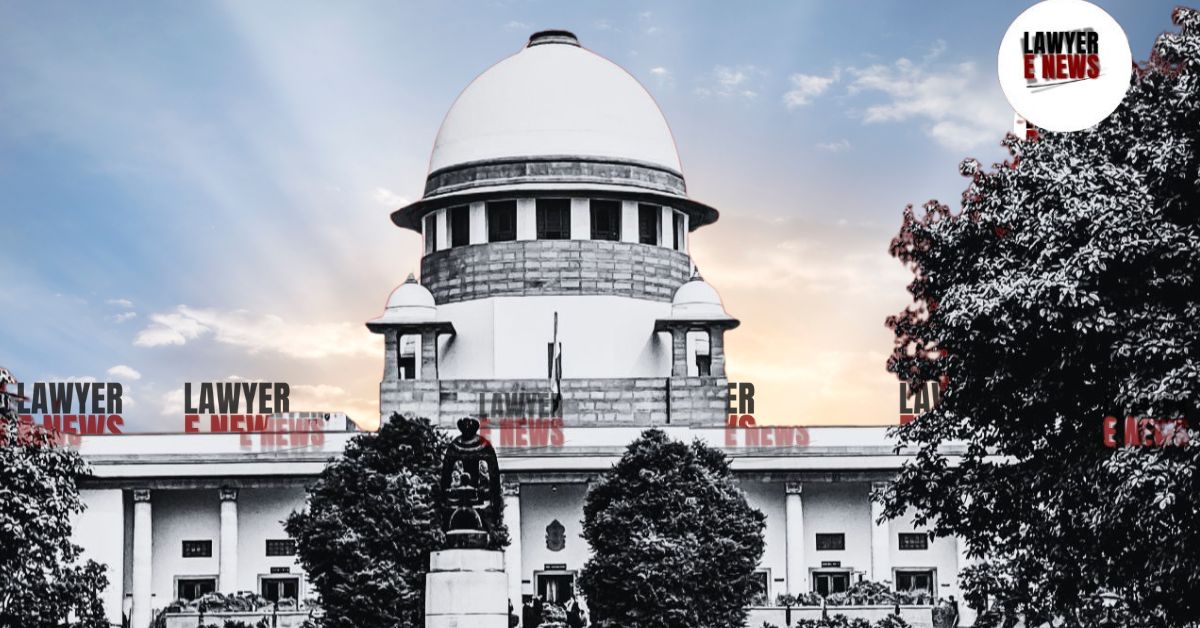-
by Admin
19 December 2025 4:21 PM



“The entire case of the appellant is based on a misconception of law” – In a profound and culturally resonant judgment, the Supreme Court of India dismissed a plea challenging the use of Urdu on the signboard of a Municipal Council building in Patur, Maharashtra. In Mrs. Varshatai v. State of Maharashtra & Ors., the Court reaffirmed that linguistic diversity is a strength of the Indian republic and categorically held that the use of an additional language, such as Urdu, in public communication does not violate any law.
“The display of an additional language cannot, by itself, be said to be in violation of the provisions of the 2022 Act,” observed the bench of Justices Sudhanshu Dhulia and K. Vinod Chandran, while emphasizing that “language is a medium for exchange of ideas that brings people holding diverse views and beliefs closer and it should not become a cause of their division.”
Challenge to Use of Urdu on Signboard
The appellant, Mrs. Varshatai, a former member of the Municipal Council of Patur (District Akola), objected to the Municipal Council’s signboard displaying its name in Marathi with a translation below in Urdu. She argued that all official work and communication of the Municipal Council must be in Marathi alone, and any use of Urdu—even on a signboard—was impermissible.
When the Council rejected her objection through a resolution dated 14.02.2020, noting that many residents were familiar with Urdu and that such signage had existed since 1956, the appellant escalated the matter under Section 308 of the Maharashtra Municipal Councils Act, 1965. The Collector allowed her plea, citing a government circular mandating “100% use of Rajbhasha Marathi” in government proceedings.
However, the Divisional Commissioner overturned this decision, leading the appellant to the Bombay High Court, and later to the Supreme Court.
Supreme Court: Application Before Collector Was “Legally Incompetent”
The Court first addressed the procedural infirmity in the case. It noted that following a 2018 amendment, Section 308(1) of the 1965 Act allows the Collector to intervene only when an application is made by the Chief Officer of the Municipal Council—not by a private individual.
“It is therefore clear that, after the amendment, the Collector can exercise powers only when the Chief Officer of the Municipal Council brings it to the Collector’s notice,” observed the Court.
In this case, the application was filed by the appellant personally, and not by the Chief Officer. As such, the Supreme Court agreed with the High Court’s earlier observation that “the application… should not have been entertained in the first place.”
Does the 2022 Act Mandate Marathi Only? SC Says No
A key development during litigation was the enactment of the Maharashtra Local Authorities (Official Languages) Act, 2022, which designates Marathi as the official language for all local authorities in the State.
The appellant contended that this new law made any use of Urdu illegal. The Court flatly rejected this reading of the statute.
“Insofar as the erection of signboard and display of the name of the Municipal Council is concerned, it does not prohibit use of an additional language, to display the name, in addition to the name being displayed in Marathi language,” held the Supreme Court, affirming the Bombay High Court’s earlier conclusion.
The Court clarified that Section 3 of the 2022 Act only requires the presence of Marathi—it does not prohibit the use of another language alongside.
“We Must Respect and Rejoice in Our Diversity” – A Deep Constitutional Reflection
The judgment is a sweeping reflection on the idea of language in India. In words that will echo far beyond the courtroom, Justice Dhulia wrote: “Language is not religion. Language does not even represent religion. Language belongs to a community, to a region, to people; and not to a religion.”
The Court addressed the historical, constitutional, and cultural dimensions of language in India—citing Article 345, the Eighth Schedule, and the Constitution’s vision of linguistic accommodation.
In an evocative passage, the judgment explains: “The prejudice against Urdu stems from the misconception that Urdu is alien to India. This opinion, we are afraid, is incorrect as Urdu, like Marathi and Hindi, is an Indo-Aryan language. It is a language which was born in this land.”
Language as Communication, Not Division
Rebutting the communal framing of the language issue, the Court emphasized that Urdu’s use by the Municipal Council was purely for “communication.”
“All the Municipal Council wanted to do was to make an effective communication. This is the primary purpose of a language, which the Bombay High Court has laid emphasis on.”
The Court also invoked constitutional history, the linguistic compromises of the Constituent Assembly, and the rich cultural legacy of Hindustani. Quoting Granville Austin, the judgment remarked: “‘Partition killed Hindustani and endangered the position of English and the provincial languages in the Constitution.’”
“Let Us Make Friends with Urdu and Every Language” – A Plea for Linguistic Brotherhood
In a poetic conclusion, the Court urged society to rise above misconceptions:
“Our misconceptions, perhaps even our prejudices against a language have to be courageously and truthfully tested against the reality, which is this great diversity of our nation: Our strength can never be our weakness.”
Quoting a nazm by Iqbal Ashhar, the judgment gave voice to Urdu itself:
“urdu hai mirā naam maiñ 'Khusrav' kī pahelī
kyuuñ mujh ko banāte ho ta.assub kā nishāna”
“We completely agree with the reasoning given by the High Court that there is no prohibition on the use of Urdu under the 2022 Act or in any provision of law… These appeals are liable to be dismissed, and are hereby dismissed.”
Date of Decision: April 15, 2025
